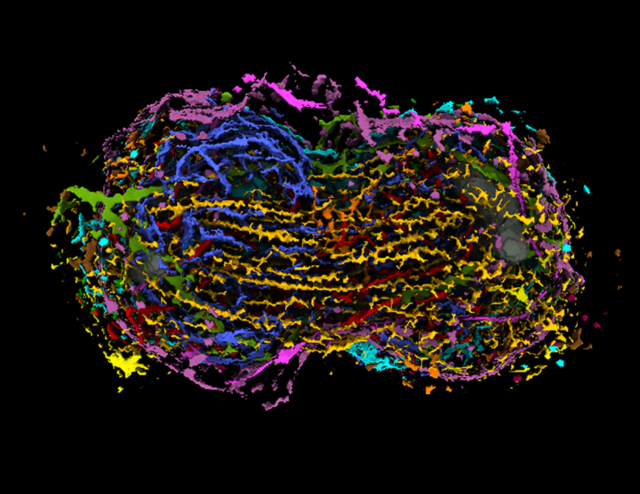MI weekly selection #332

New tool helps scientists visualize stem cell division
A tool developed by the Allen Institute for Cell Science can help scientists see what a human stem cell looks like when it’s dividing. The Integrated Mitotic Stem Cell is a colorful 3D map of an average cell during various points in the cell division process.
How bacteria pick up drug resistance from nearby cells
Bacteria become resistant to drugs thanks to a membrane pump that pushes antibiotics out of a cell long enough to allow the cells to pick up drug resistance in the DNA of neighboring cells. Researchers made the discovery about the membrane pump in a study of E. coli.
Fossils found in Canada may be billion-year-old fungi
Fossils of fungus found in the Canadian Arctic may be the oldest ever found on Earth, dating back up to a billion years. The fungi’s advanced age is about 500 million years older than the previous fungus record-holder.
Early collision may account for differences between moon’s sides
The moon’s collision with a dwarf planet not long after it first formed is likely responsible for the asymmetry of its two sides. Scientists used computer simulations to show how an impact with a planet the size of Ceres could account for the relatively more abundant presence of craters on the moon’s.
Ravens seem to pick up on each other’s bad moods
Ravens are aware of each other’s negative feelings, and those emotions may sometimes be contagious. When the birds saw other ravens respond negatively to a certain food, the birds that observed the behaviour behaved similarly, a reaction that was not echoed when the original ravens behaved in a positive manner.